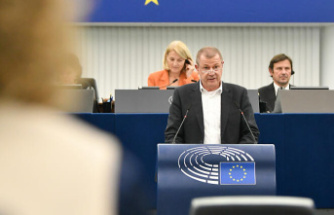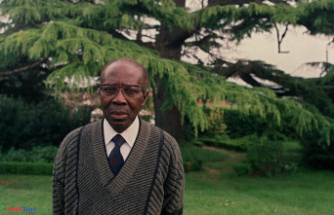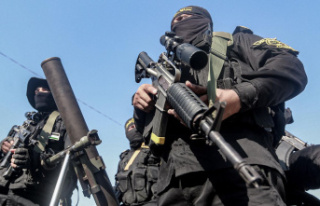The fog at sea was so dense that it prevented any orientation. For Arthur George Dunning, captain in the service of the proud English Cunard line, this was no reason to throttle his ship's speed: passengers in first class had wished to see the Azores - and so the "Slavonia" was chasing on September 9 June 1909 south around Flores. It was en route from New York to Gibraltar, with 110 cabin guests and 300 third-class passengers on board.
In the absence of other technical aids, the crew had to keep watch with binoculars. She did it badly: in the evening the ship ran onto the cliffs of Ilhéu da Baixa Rasa, a good 19 kilometers from the calculated course. Soon after, the radio operator pressed the Morse code three times short, three times long, three times short - the first SOS in the history of international seafaring.
It had been a long road to this identifier, which is still common, although no one has spoken Morse code at sea since 1999. Today, in the event of an accident, satellite-controlled monitoring systems indicate the exact coordinates of the ship in distress. But at the beginning of the 20th century, agreeing on a common distress signal required an act of difficult international cooperation.
When representatives from 27 countries met in Berlin in October 1906 for the International Radio Conference, powers sat around a table that competed with each other for trade and passenger routes on the world's oceans, with the British desperately wanting to defend their dominance. They also saw themselves as being militarily challenged by the Germans: from the turn of the century, Kaiser Wilhelm II had a fleet built up in order to significantly reduce the gap in naval forces to England.
There was unity in Berlin on the point that ships which were about to sink should no longer be left without a chance of help. However, the transmitters of the different nations worked with different technical systems, which often made communication difficult enough in an emergency. Now it was a question of at least agreeing on a common sequence of letters in Morse code.
A tough struggle broke out over this as well. German radio operators, for example, have been using SOS in Morse since 1904 in the event of difficulties. The Italian radio pioneer Guglielmo Marconi, on the other hand, favored the sequence of characters CQD as a distress signal - pronounced this resulted in "Seek you" and "Distress" - this combination was the standard for the British and the USA.
In the end, the catchiness tipped the scales in favor of the SOS, it was easy to recognize even in the worst conditions in the ether. The participants also agreed on a common wavelength on which the signal could be received. However, the letters did not have their own meaning, as was attributed to them later. Neither the words “Save our Souls” nor “Sure of Sinking” had the delegates in mind at the conference. In 1908 the code was introduced worldwide.
For the "Slavonia" this result turned out to be a stroke of luck. Captain Dunning sent out both a QCD and an SOS in Morse - and the SOS reached two German ships that were nearby. Hapag's "Batavia" and North German Lloyd's "Princess Irene". This steamer was a good 330 kilometers away, reached the scene of the accident on the evening of June 10, picked up the 110 cabin passengers and brought them to Naples. The “Batavia” then took care of the third-class passengers.
With the exception of the captain and first officer, the crew had to wait until the end of the month before they took the "Lusitania" back to Great Britain. This ship, which was to be sunk by a German U-boat in 1915, also took on the cargo, mainly coffee and copper. There was also an attempt to have the "Slavonia" rescued by the rescue steamer "Ranger", but this failed. The ship broke up during a storm and sank.
Its captain, Arthur George Dunning, escaped with his life and a serious reprimand from the British Board of Trade. He fared better than his colleague John Smith, who had what was probably the most famous SOS of all time in Morse code in the service of the White Star Line on April 14, 1912: His "Titanic" had collided with an iceberg on the maiden voyage from Southampton to New York and sank. Smith went down with the luxury liner. Also, the signal did not work as well as in the case of "Slavonia": some nearby ships could not receive it. Other captains, legend has it, thought it was a joke. The Titanic was considered unsinkable.
You can also find "World History" on Facebook. We are happy about a like.
This article was first published in June 2020.












